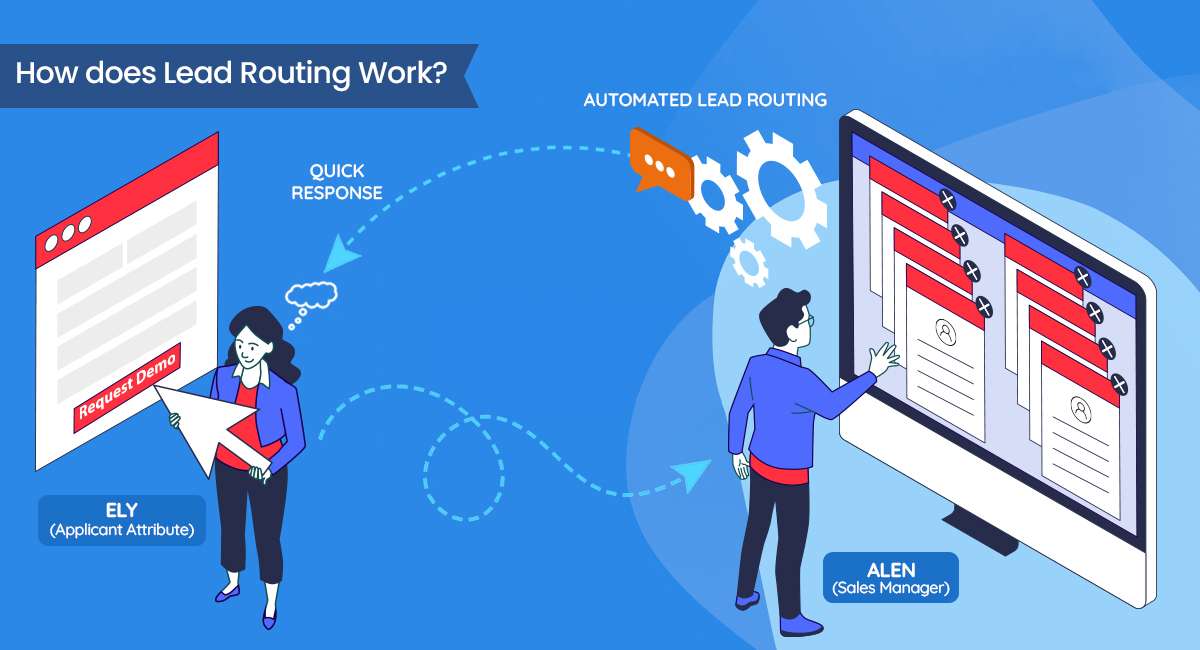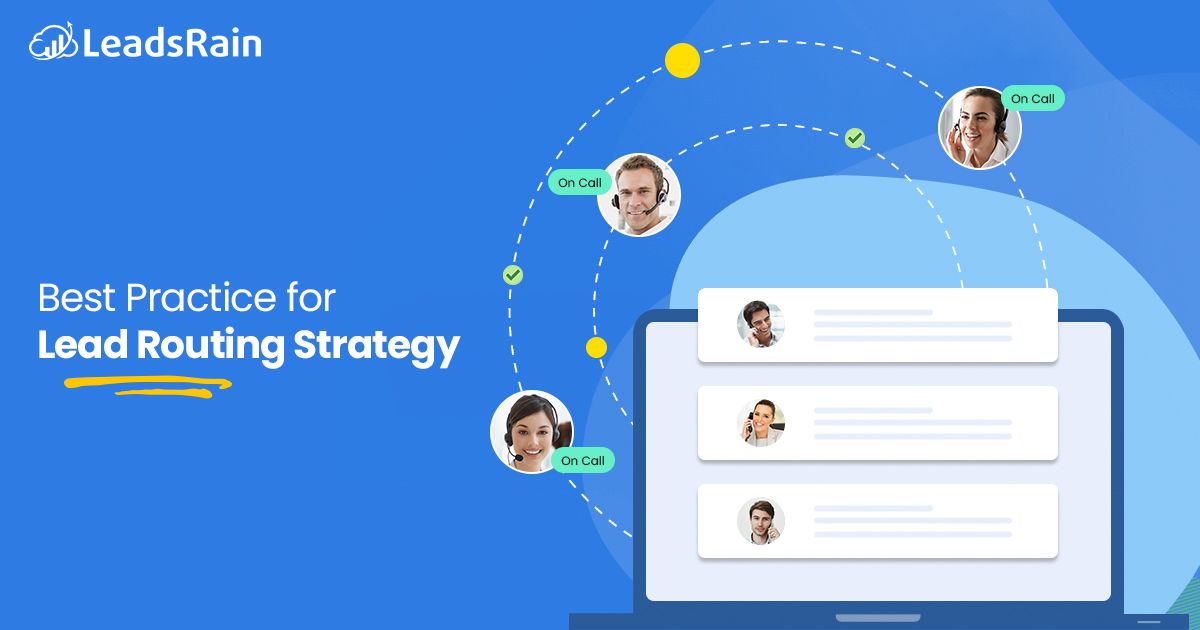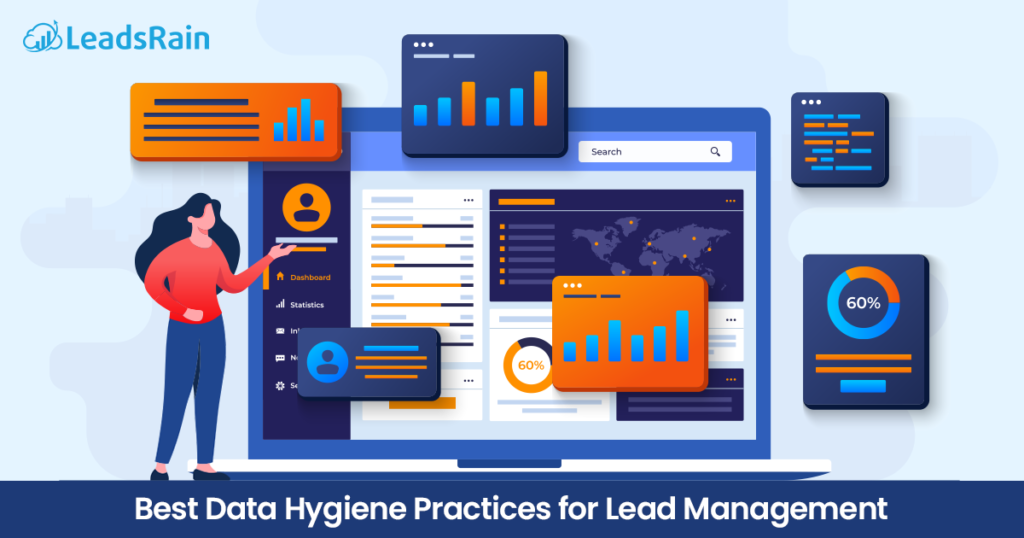Do you want to know how to manage leads effectively? One pro tip: Managing and distributing leads is crucial for maximizing opportunities. But the question still arises: How?
Well, some studies have shown that almost 99% of organizations fail to email or call an inbound lead within 5 minutes. This delay in responding leads to missed opportunities, ultimately resulting in no deals.
So, the next step is to implement lead routing! We will delve into the concept of “lead routing”, and discuss some most common rules for lead routing.
Keep scrolling throughout the blog for more info.
What is Lead Routing?
The process of assigning leads to the most appropriate salesperson is called lead routing. Lead routing is deep down how your contact center automatically manages the incoming calls. This engenders the collection of leads and distributing them internally.
Lead routing is the distribution process of leads across the sales team. This generates predetermined rules for when and to whom leads are to be assigned according to agents’ skills. It’s also known as lead management, it’s about the significance of the workflow of contact centers which ensures that you meet your customers’ needs successfully.
Do you know you can automate your lead routing process?
Automating lead routing strategies will justify your contact center’s improvement in efficiency and key performance indicators (KPIs). Lead routing enhances customer satisfaction and eliminates lengthy wait times.
Lead routing functionality has access to customer relationship management (CRM) and marketing automation for intelligently distributing leads to the exact place in the funnel where they could be completely matched.
How does Lead Routing Work?
Let’s Understand impact of Lead Routing
- Alen is a sales manager at a B2B software company. He receives various forms on websites from visitors requesting a product demo.
- Forms are connected with CRM but lack lead routing systems or automation during the process.
On the other hand,
- Ely visits a website to make a purchase and thinks that products could be appropriate for her company.
- She fills out the demo form to create a lead in your CRM system. However, due to his busy schedule, Alen doesn’t have time to review new leads in the CRM system.
After some days,
- Alen emails Ely, BTY, but it’s too late. She was greatly interested in your products and wanted a demo for them, but due to your late response, she is no longer interested in them and thus lost interest.
In such cases, what if you speed up your response time towards your leads?
Here comes the need for automated lead routing….
Do you want to know how it can be fruitful? Let’s understand
Lead automatically routes new leads when entered in CRM, generates/integrates them through website forms, and matches them with the perfect sales reps. These can be only possible with lead routing software.
Let’s recall the example of Ely again, but this Alen will maximize the power of CRM along with automated lead routing (in-built routing features).

This time,
- Ely will fill out the form with the required information. Alen’s web lead forms will automatically generate a lead record.
Afterward,
- Alen’s lead-based company will automatically assign Ely to the enterprise lead queue if the information matches.
- Sales reps will receive a notification about new leads generated in the queue.
- Sales reps check out Ely’s records and match them to the company’s target market.
- The call will be set away to connect with Ely more quickly, to stay in competition without wasting the lead’s time, and to satisfy Ely with a quick response.
5 Common Lead Routing Examples
If leads are routed appropriately, customers can interact with your contact center in a tailored manner on their first contact. We have dissected the five most typical lead routing examples, criteria, options, etc. Gaining proficiency with them will help you boost client happiness, streamline your sales process, and expand your company.
1. Location-based lead routing
Businesses can route leads based on geographical location, enabling sales reps to divide and conquer regionally. This method is fruitful for both contact centers and customers.
Lead routing by specific region ensures that calls are channeled to the accurate agents within the correct time zone.
Remember, your sales team needs to understand the regional market for this type of lead routing. For instance, lead generated from a specific territory such as Europe, Africa (EMEA), will automatically be routed to appropriate and responsible sales reps for that particular region.
Are you thinking of targeting multiple geographies? Then, this might be a great option for the sales team. It will save your organization time and money, as travel doesn’t need to be far.
One great piece of advice:
Try to define your territories and organize CRM data for those selected territories. An automated CRM toolset will enhance your records and translate them into territories.
2. Customer-based Lead Routing
Call centers may also prefer to route calls based on the type of caller.
For instance, you might think that new leads should be routed to the sales team instead of routing existing customers.
Agents can efficiently and instantly resolve customer calls that are routed by customer type. If the caller is a customer, they can be passed on to CSMs, and if a new lead is connected on the call, it is mostly routed to the sales team. This segmentation will streamline and simplify your lead routing process.
Remember, if calls are routed to existing customers, you can consider a customer relationship management (CRM) system for tracking previous customer interactions and history.
3. Specialized Lead Routing
Leads are efficiently routed based on specialized use cases if your product/services offer several use cases. This method helps you direct qualified leads to reps who are experts in this field.
Many tools and systems are available with numerous relevant use cases. Make sure to consider customers in the same industry when niche leads are generated.
For example, our use case is “the automotive industry”; automated tools can be used for sales engagement to attract more customers to your automotive brand.
It’s nothing but just targeting calls to specialized call center agents who are qualified to handle specific calls.
4. Lead Score-based Routing
One of the popular types for building priority lists for serving inbound leads. Leads are scored based on multiple criteria such as;
- Value
- Geography
- Use case.
- Engagement with your company.
- Company size.
Routing is executed based on the score generated. You might require routing more practiced reps with higher scores.
The lead score is surrounded by the customer’s concerns, which helps them direct them to the appropriate agent to resolve their issues. These types of leads usually assign a quantifiable value for every lead generated.
Kicks a more tailored approach, enabling the closing of more leads with less effort.
5. Temperature-based Lead Routing
Businesses need to distribute leads based on temperature i.e. their purchasing eagerness. This signifies that you need to understand the prospects’ buying behavior.
Usually, three types of leads are available: hot, cold, and warm leads. When prospects have shown interest and are looking to buy your product/service are “hot leads”.
- Hot leads are being routed to Aes for immediate follow-up.
- Cold leads are those who have not shown any engagement or prior interest in making a purchase.
- Warm leads have already shown interest in your products/services. They can be nurtured until they can communicate with the sales team.
Thus, once they understand their behavior and interest patterns, organizations can route leads accordingly.
How can you increase your Sales or Smooth your sales process with Lead Routing?
Here’s something to hold on to! If you want to boost your sales or streamline your sales process with lead routing. Lead routing is about efficiently assigning leads to the most appropriate sales reps to maximize conversions.
Advanced lead routing can smooth your sales process with omnichannel outreach strategies. Let’s understand these with a few examples which are;
Imagine a website visitor initiates a live chat conversation with your sales team. Using intelligent routing algorithms, the system can analyze the visitor’s behavior and route the chat to the sales reps with the highest chance of converting that lead. This ensures a personalized and timely response.
On the other hand, when the potential customer visits your website and fills out a contact form. With omnichannel lead routing, the system can automatically capture that lead and distribute it to the appropriate sales reps through various channels such as Sales Dialer, email, SMS, Automated Ringless voicemail and many more. This will ensure that no lead goes unnoticed and allow for quick follow-up.
Your business can smooth your sales process with omnichannel integration lead routing, which offers ;
- Multi-channel lead capture
- Social media lead routing
- Automated lead distribution
- Location-based lead routing
- Personalized lead routing
- Intelligent routing algorithms
- Real-time notifications
Conclusion
You will gain insightful knowledge about “how to manage leads effortlessly?”. It’s time to unleash the potential of lead routing strategies in order to stay ahead of the competition. So go ahead and include these in your deal-making process, and you’ll see your sales process grow!




